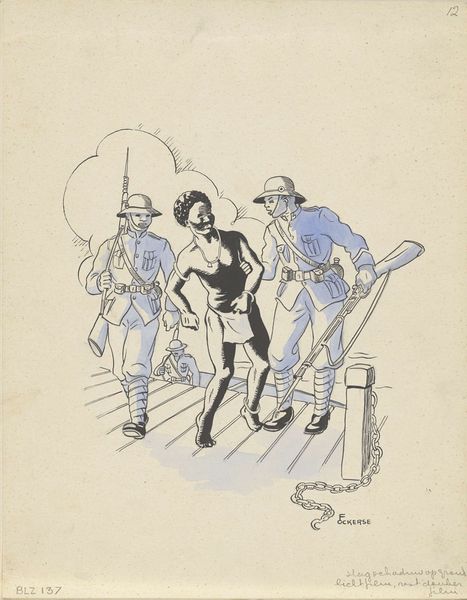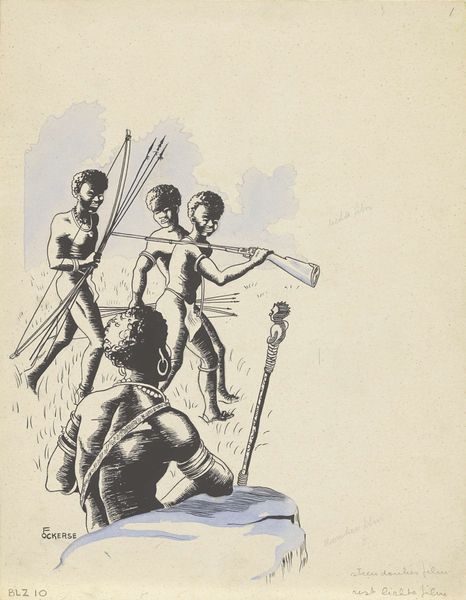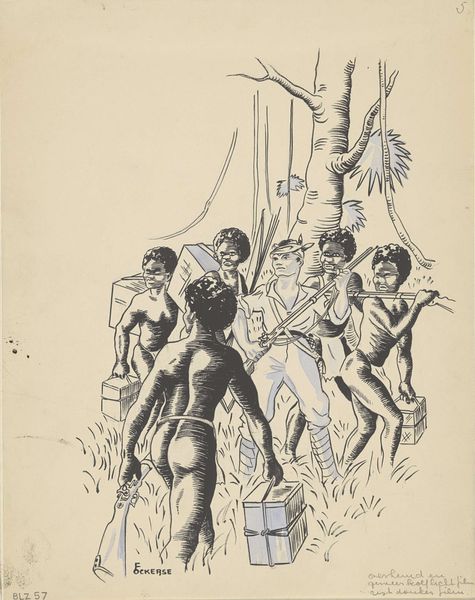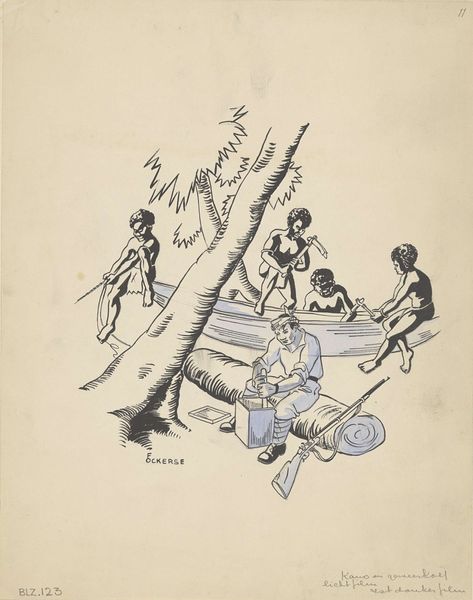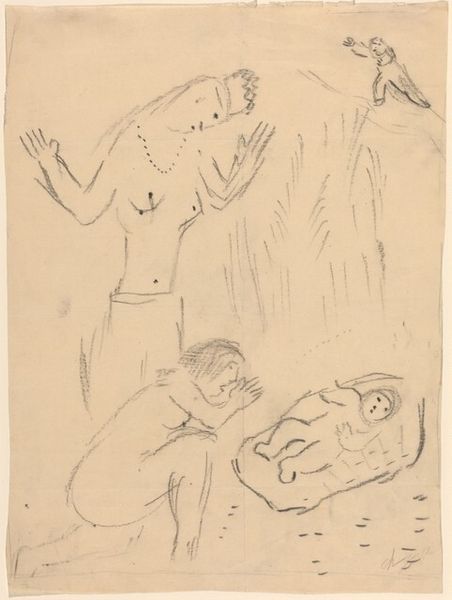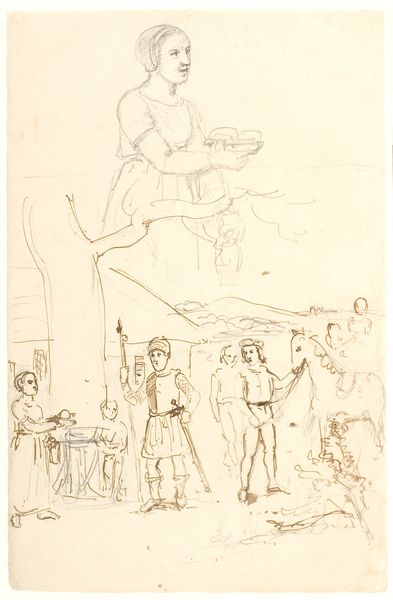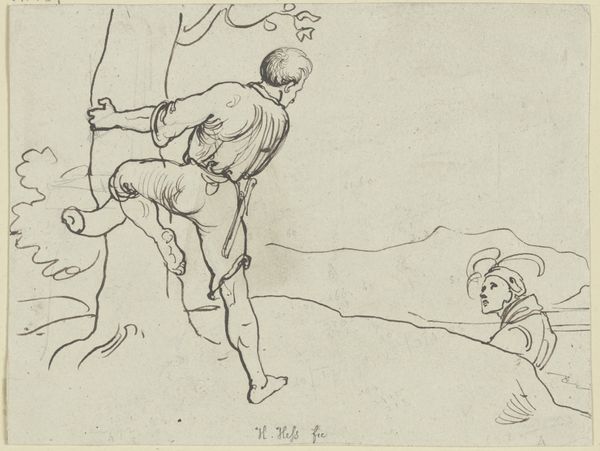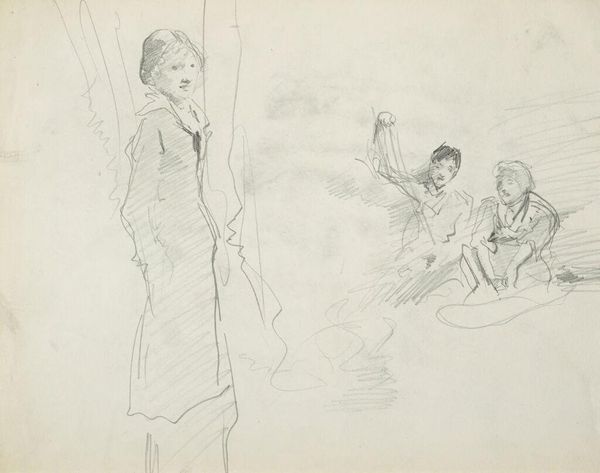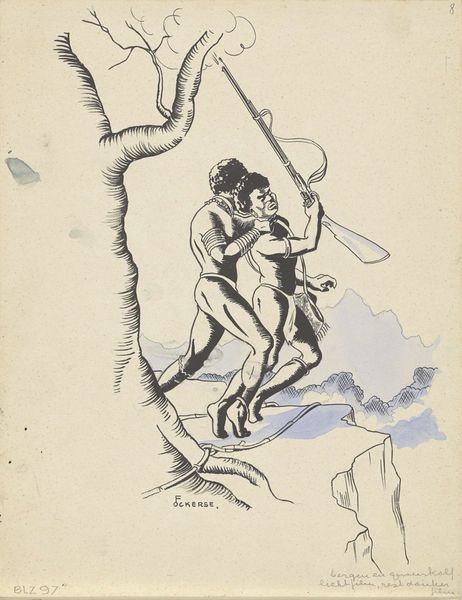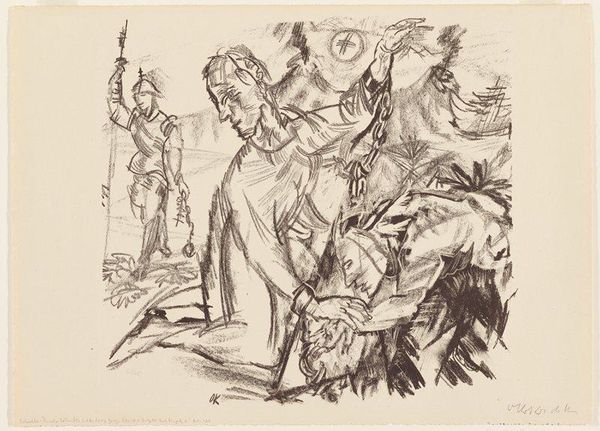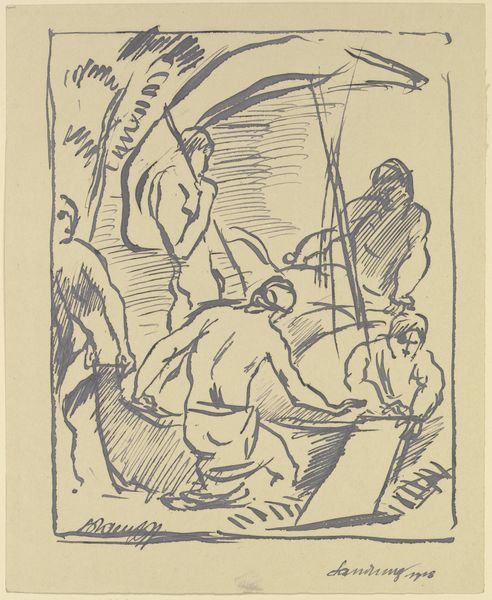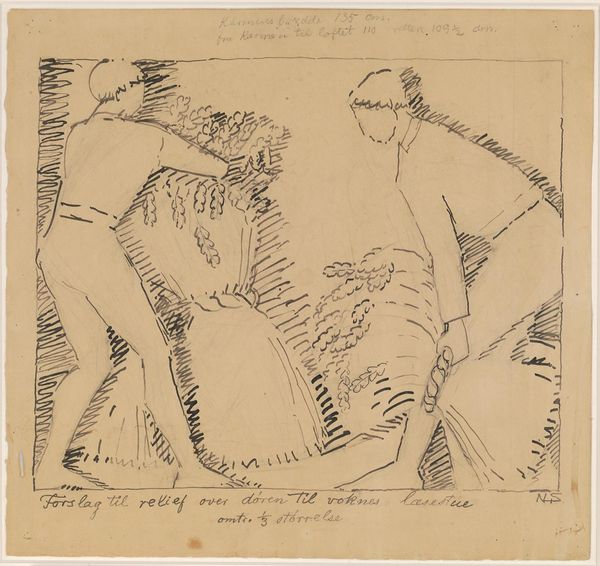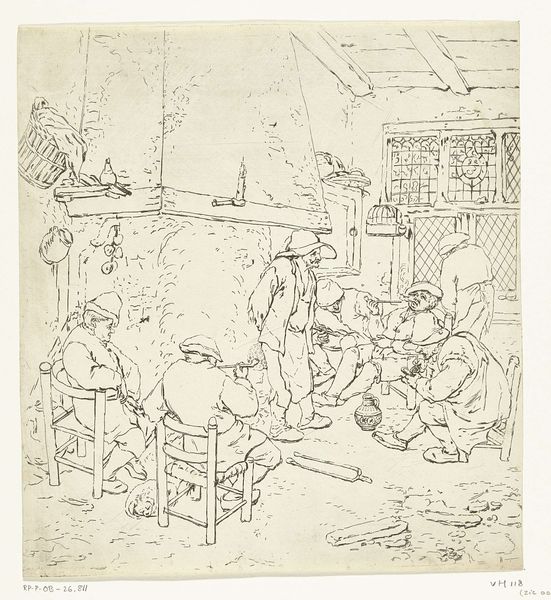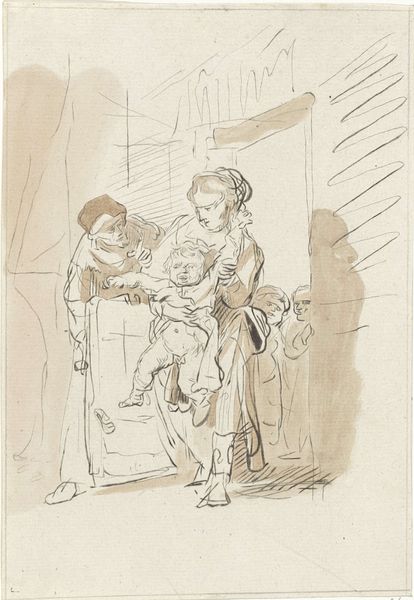
drawing, ink, pen
#
drawing
#
imaginative character sketch
#
quirky sketch
#
narrative-art
#
cartoon sketch
#
figuration
#
personal sketchbook
#
ink
#
idea generation sketch
#
ink drawing experimentation
#
pen-ink sketch
#
sketchbook drawing
#
pen
#
sketchbook art
#
fantasy sketch
Dimensions: height 275 mm, width 216 mm
Copyright: Rijks Museum: Open Domain
Curator: Let's discuss this ink drawing, attributed to F. Ockerse, entitled "Nieuw-Guineese jager daalt af van een gevlochten ladder," or "New Guinean Hunter Descending a Woven Ladder." It's believed to predate 1936. Editor: My initial impression is that the artist created this image from an outsider's perspective, romanticizing a foreign encounter through the graphic weight of the pen strokes that add to its energy. Curator: Absolutely, let’s delve deeper into that perspective. Given the historical context, pre-1936, we're looking at a colonial lens shaping this representation of Papua New Guineans. The very act of depicting this "hunter" speaks volumes about the power dynamics at play. Editor: Yes, consider the ladder, a tool of access and control. The means by which that ladder was manufactured is central. Was it local material? By whose labor? Curator: The ladder as material, symbolic, and functional is an incisive observation. It visually emphasizes a vertical hierarchy, the descending hunter moving from some unspecified “up” to meet the assumed viewers and figures at the bottom. And why is the hunter wielding a knife? It feels almost staged for the colonial gaze. Editor: Exactly. The figures below, especially the one in Western dress, bear a rifle—instrument of mass production and the raw materials behind it, steel, wood, labor to consider too. The materials and production tell as much as any surface read. Curator: The composition really sets the scene: a figure exiting from this strange hybrid ladder to… well, to what? What is to be extracted? Are they here simply for observation, a moment of so-called ethnographic curiosity, or something far more sinister? Editor: Good point. It could be an object of trade, resource extraction, cultural appropriation; but at its most basic, the materials speak of colonial encounter and ensuing shifts in the labor dynamics of everyday life. The ladder can also signal change, imposed industrial process that alters life’s course. Curator: A very important thought, and I would even like to include what this signals for the contemporary experience, the impact of globalization, appropriation and historical legacy. Thank you. Editor: Absolutely, understanding production means and the weight that materiality carries can teach us a lot about this seemingly quaint picture.
Comments
No comments
Be the first to comment and join the conversation on the ultimate creative platform.
